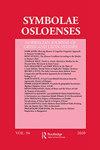Poets and Teachers in the Underworld: From the Lucianic katabasis to the Timarion
IF 0.1
3区 历史学
0 CLASSICS
引用次数: 1
Abstract
Building on the classical tradition, which was strongly emulated in the Second Sophistic, Lucian used the katabasis motif (as we know it from, e.g., the Odyssey’s book 11) and staged various meetings in Hades. These Lucianic encounters were later rewritten by Byzantine authors who adapted them in order to express comical, critical, or subversive approaches towards power structures. In the present article, special focus will be placed on twelfth-century Byzantium and the anonymous dialogue Timarion. It is argued that the author of the Timarion used the Second Sophistic tradition of Lucian in order to discuss contemporary questions of the Greek literary and rhetorical heritage. He created a fictional space that displayed ancient learning and allowed discussions of contemporary culture in a textual parody with satirical functions.地下世界的诗人和教师:从卢西恩派到提马里昂派
在古典传统的基础上,《第二诡辩》强烈效仿,卢西安使用了katabasis主题(如我们从《奥德赛》第11卷中所知),并在哈迪斯举行了各种会议。这些卢西亚式的遭遇后来被拜占庭作家改写,以表达对权力结构的滑稽、批判或颠覆性的态度。在本文中,特别的重点将放在十二世纪的拜占庭和匿名对话提马里恩。作者认为《提马里昂》的作者运用了卢西恩的第二诡辩传统来讨论希腊文学和修辞遗产的当代问题。他创造了一个虚构的空间,展示了古代的知识,并允许在具有讽刺功能的文本戏仿中讨论当代文化。
本文章由计算机程序翻译,如有差异,请以英文原文为准。
求助全文
约1分钟内获得全文
求助全文

 求助内容:
求助内容: 应助结果提醒方式:
应助结果提醒方式:


